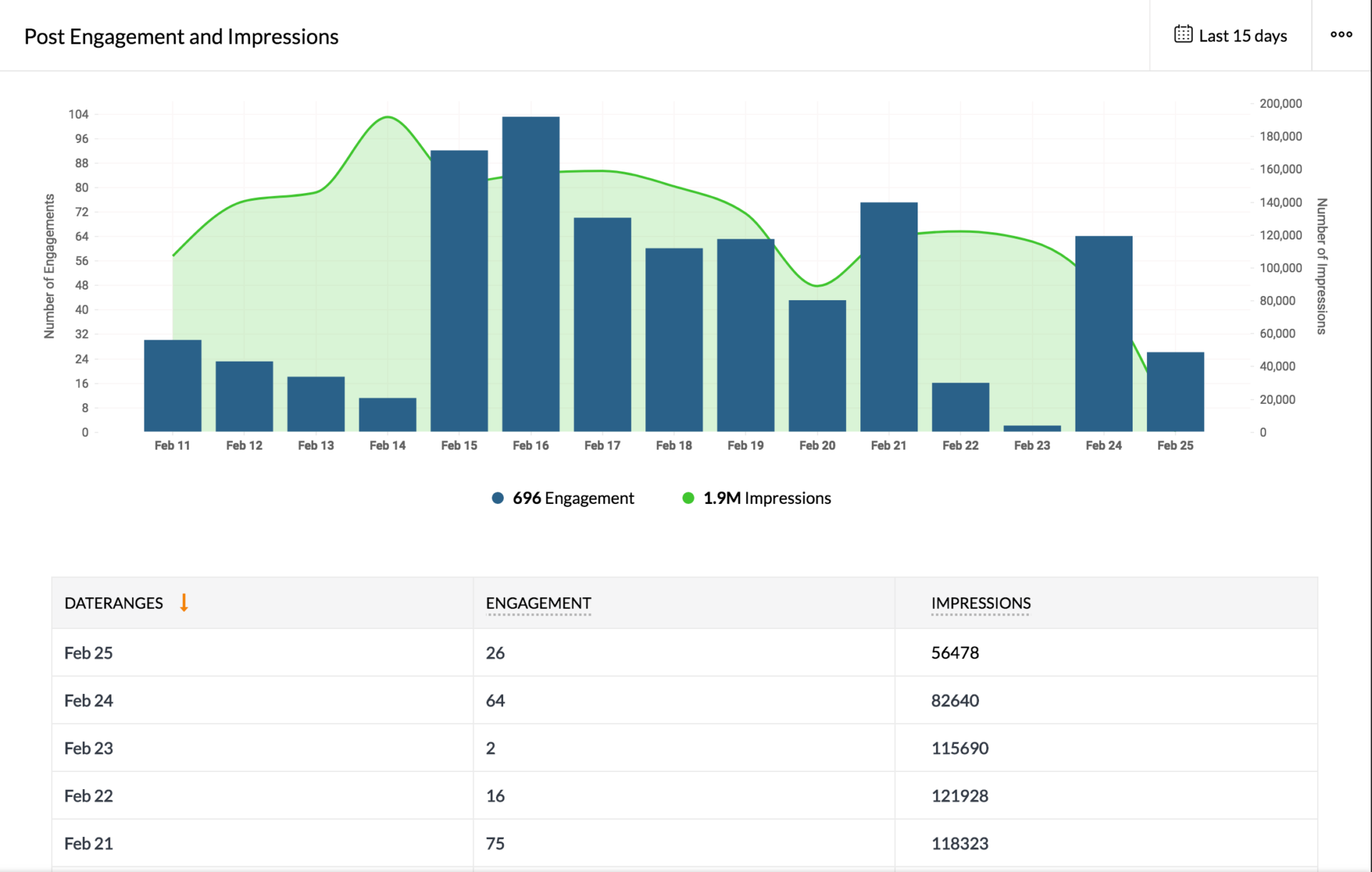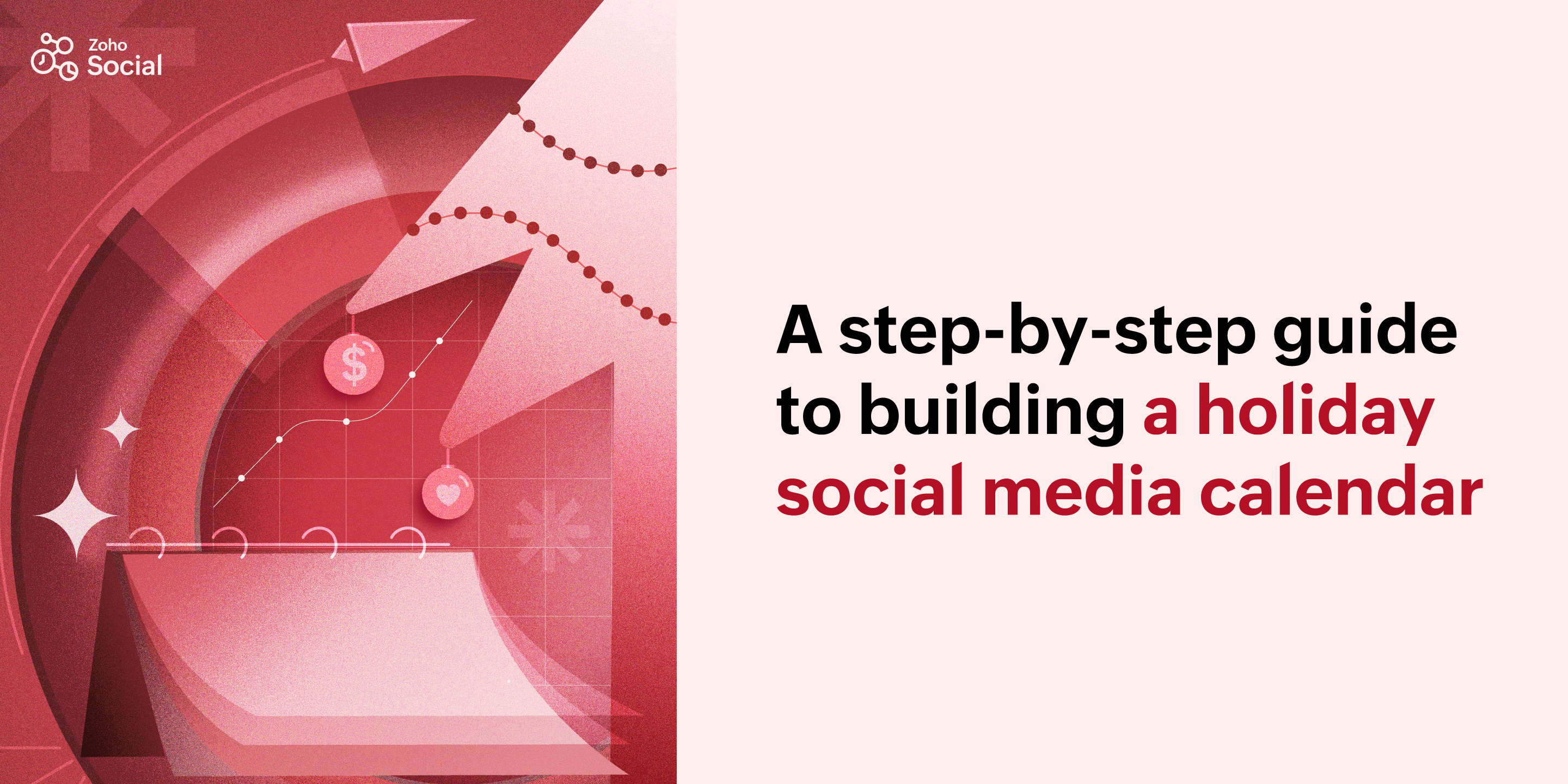The essential guide to social media engagement for your business
- Last Updated : August 17, 2023
- 34.4K Views
- 10 Min Read

It’s happening—people are finally recognizing social media as an indispensable part of their marketing strategy. Social media is where everybody is, and it has permeated all demographics. This gives marketers access to a huge pool of potential fans, and that makes it all the more enticing.
However, it’s easy to do it wrong.
It can be tempting to use your social media channels as broadcasting tools, where you blast out updates, news, and announcements one after the other, hoping that your followers don’t miss anything. However, this isn’t really going to help you at all.
If you use social media to actually engage with your audience, though, it can do wonders. Regardless of your goals, whether it’s to generate leads or to improve brand awareness, engaging with your audience is what will help you achieve it. In fact, it wouldn’t be an exaggeration to say that engagement is—or should be—the cornerstone of your social media activities.
What do we mean by engagement, though? Fundamentally, social media engagement is getting someone to interact with your brand in any way. This could be in the form of likes, comments, shares, retweets, follows, or even DMs. Getting your audience to talk to you is fundamental to achieving any goals that you’ve set. Really, just forget social media marketing. Social media in itself thrives on engagement. After all, it’s supposed to be “social,” right?
Engagement is important because people don’t want to interact with faceless entities. They want to talk to real people. When you pay attention to your audience and have real conversations with them, they feel like they’re talking to someone real, and that will create a sense of trust in your brand. Ultimately, that is what people buy into. In the words of Bryan Kramer, “There is no more B2B or B2C. It’s H2H—human to human”
How you can improve engagement
Improving your social media engagement, like anything else, needs to start with a plan. Having a clear, well-defined strategy will go a long way in helping you achieve your goals on social media. But in order to be successful, you’ll have to do some groundwork. You’ll need to know exactly what your goals are, who you’re talking to, and how engaging with these people will help you achieve them.
We’ve put together 7 tips to help get you started:
1. Define your goal
The first step to creating a plan for your social media engagement is to identify your goals. Unless you have clearly defined goals, there’s no way for you to tell whether you’ve achieved them or to assess the impact of any changes you may need to make.
With regards to improving your engagement, you should be able to articulate both what type of content you can offer to your followers, and what you want to achieve through engaging with them. Some examples of goals you may set are:
- Improving brand awareness
- Finding leads
- Converting leads into prospects and customers
- Getting feedback about products
- Helping existing customers with issues they may have
But remember, not every conversation you have with every follower is going to stick to the goal that you’ve set. For instance, your goal might be to find new leads on social media, but if an existing customer reaches out for support, you can’t ignore them. However, having well-defined goals will give you direction, and you may be able to steer some conversations in the direction you want to go.
2. Study your audience
When it comes to social media engagement, your audience is supreme. And to succeed in it, you’ll need to know as much about them as possible. There are no shortcuts here. How are you going to talk to people you don’t even know?
It’s highly recommended that you create an audience persona—an “ideal target” with whom you want to talk. The more specific you get here, the more successful you’re likely to be.
But how do you know who your ideal target is? It’s pretty subjective really, but there are many metrics that you can use to give you an idea as to who they are.
Firstly, you’ll need to study your existing customer base. Who is currently using your product? What are their ages? Where do they live? What are their interests, and what are their spending patterns? What languages can they speak?
The answer to all these questions will give you an idea as to who is actually using your product. Use this to create a profile for your ideal target. Other sources you could use are your competitors’ profiles on social channels. Take a look at who they’re targeting. This might give you more information on the people you can target.
It’s also a good idea to define what values your products or services offer, and what pain points they can solve. If you’re able to identify the people who are most likely to experience these pain points, you can use that information in creating your ideal target.
3. Create content that adds value
Once you’ve created your ideal target, you’ve done more than half your work. This is because one of the best ways to increase engagement for your brand is to consistently create content that adds value to your audience. If you have an idea of the type of content you’re going to create, make sure you choose the right network for it!
Your content will depend on the goals you’re looking to achieve. If it’s brand awareness that you want, you may choose to adopt a funny personality online, but the kind of humor you use will depend on the audience that you’re targeting.
MoonPie does this very well. Their audience is clearly young millennials who are fans of the brand of awkward humor that’s common today. A scroll through their Twitter feed will show exactly the kind of personality they’ve created.
These kinds of tweets are great for raising brand awareness—and it works. In a short span of time, sales for their product reached the highest it’s ever been in their 100-year history. And it can all be linked to their social media efforts.
Your social media channels may not get as popular as MoonPie’s did (we hope it does), but the concept will help you succeed. Identify your target audience, and create content that adds value to them and will help you achieve your goals. If you’re able to do this, you’re golden.
4. Look out for trends
Another great way for you to improve the engagement for your brand is to look out for emerging trends. There are two kinds of trends that you should keep your eye on—social media trends, and pop culture trends.
Social media trends refer to the changing nature of what works best on social media. Considering how dynamic the social media landscape is, it’s necessary for marketers to keep a close eye on emerging trends, so that they can stay ahead of the curve. For instance, videos are increasingly popular on social media, and posts with images have always done well on social channels. We’ve written about the emerging trends for 2019, but you should keep your eye out for new trends as they emerge.
Pop culture trends refer to the types of humor, practices, and art that are dominant at any given point of time. Keeping an eye on pop culture trends will really help, because the frenzy surrounding it will give your content more reach than usual. Many brands on social media incorporate the latest memes into their content to reach more people. Here’s an example from Gucci:

It’s not just memes, though.
A few years ago, zombies started becoming popular again. This was in part due to the emergence of TV shows like The Walking Dead. REI used that to their advantage, and made this infographic of 13 items needed to survive a zombie apocalypse. And of course, all 13 of them were their products.
5. Be proactive in engaging
When it comes to engagement in social media, there are two ways to go about it. You can either take a reactive approach, or you can be proactive.
Reactive engagement is when you wait for your audience to make the first move. You wait for them to message you, comment on your posts, or otherwise engage with you before you start a conversation with them. This is important and can’t be ignored—when people reach out to your brand, you need to make sure that you’re replying to them. No one likes being ignored.
It makes sense to set up a policy on how you go about this. You can use social media monitoring tools to keep an eye on your social media activity and assign a member of your team to reply to messages or comments that come your way. But you should also consider proactively engaging with your audience.
Proactive engagement is more about identifying opportunities for you to jump in and start conversations with people on the internet, even if they weren’t directly talking to you in the first place. Some monitoring tools allow you to monitor keywords, as well. So if you’re a travel agent, and you spot a tweet that talks about say, vacation, it’s a nice opportunity for you to pitch your brand to them. This is additionally impressive to the audience because, to them, it will feel like you’re making an extra effort to help them with their pain points.
Here’s a tip—when you monitor social media, be sure to include common misspellings of your brand’s name, so you don’t miss a single opportunity.
6. Keep it funny
If you felt uneasy when you read that, I understand. Humor can be hard to pull off. Not everyone is gifted with a natural talent for making things funny, but if you’re able to do that, it can do wonders for your brand.
Funny memes, witty hashtags, puns, and topical jokes are some of the most popular content on the internet. When you make jokes on the internet, people will instantly connect with the human side of your brand. It’ll make you seem more friendly and trustworthy. All of that is great for your business.
People all around the world love to laugh, and if you’re able to pull it off, you can be sure that your engagement rates are going to shoot up. But you’ll need to do it right. Insensitive jokes, or jokes made at the wrong time, can lead to severe backlash and cause harm to your brand’s reputation. Snapchat once referred to a popular domestic violence case, and that caused serious damage to their reputation, along with shaving $800M off their market value.
While that’s an extreme case, examples like this are why it’s important to do humor right on social media. Our guide on using humor to build a social media presence should help you get started.
7. Be direct!
And finally, you could always be direct. If you want your followers to review your latest release, just ask them to do it. People are generally happy to share their opinions on products they like or offer suggestions for improvement, especially when asked for. However, you need to make sure that you’re acknowledging their feedback by replying to them, and that you’re actually taking their feedback seriously. If your followers believe that their suggestions are falling on deaf ears, they’ll be less than impressed with you.
If your goal is to increase your brand awareness, you could ask your followers to retweet or share your content as part of a giveaway. There are multiple ways to do this, and you can even consider using CTAs to get your followers to engage with your brand in the ways you want them to.
Measuring engagement in social media
While we’ve discussed a lot about what you can do to improve your social media engagement, you’ll need to be able to measure it, so you can check if you’re actually succeeding. All social media channels have their own set of analytics to help you track engagement. Here’s a list of engagement metrics that are available on some of the popular channels:
Page insights: A summary of your Facebook page’s performance over either a day, week, or the last 28 days.
Followers: The number of people who follow your Facebook page.
Likes: The number of people who have liked your posts.
Reach: The number of people who have seen your posts on their newsfeed or directly on your page.
Page views: The amount of traffic your Facebook page is getting. You’ll also be able to see the areas of your page that are most popular.
Posts: Contains information on how your posts are performing. It will also tell you when the best time is to post, in order to reach the most people.
People: Tells you demographic information about your followers.
Monthly summary: A summary of your account’s performance. It includes a month-by-month summary of metrics, such as follower counts, tweet impressions, and mentions.
Impressions: The total amount of times your tweet has been seen.
Engagements: The total amount of times users interacted with your tweet.
Audience: Tells you demographic information about your followers.
Impressions: The total amount of times your post has been seen.
Reach: The number of unique views your post has.
Website clicks: The number of times the website you’ve added to your profile has been clicked.
Profile visits: The number of times your profile has been visited by users.
Posts: Gives you data on the likes and comments on each image that you’ve uploaded.
Actions: Information on posts that inspired users to visit your profile, follow you, or click on your site.
Discover: The percentage of accounts who saw your post but aren’t following you.
While you could use the native analytics that each channel provides, you could also consider investing in a social media management tool. A lot of these tools come with their own analytics feature built in, and they can provide you with additional insights on how your posts are performing over time. Here’s how this looks in Zoho Social.
 Once you start measuring your engagement, you should be able to tell whether you’re on track to achieve your goals. If for some reason, you aren’t satisfied with the results that you’re getting, you can always play around with your strategy and check what works best for your brand.
Once you start measuring your engagement, you should be able to tell whether you’re on track to achieve your goals. If for some reason, you aren’t satisfied with the results that you’re getting, you can always play around with your strategy and check what works best for your brand.
That’s it from us for today! In case you have any questions, or would like to discuss something, feel free to drop a comment below, and we’ll be sure to get back to you.
 Vishal
VishalContent writer at Zoho Social, stand up comedian, and lover of dogs. I read a lot.



Comments(1)
It’s going to be end of mine day, however before ending I am reading this enormous piece of writing to increase my knowledge.